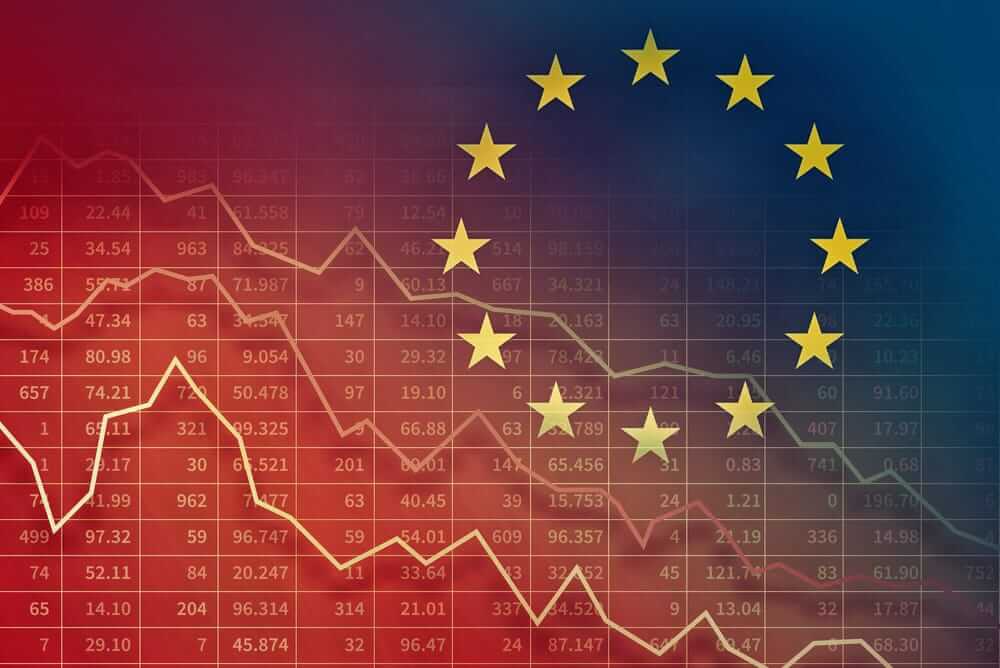
Europe’s Economic Activity Teeters on the Brink as Output Falls
The euro area economy is facing a critical juncture as economic activity remains uncertain, raising concerns about the region’s economic stability and the challenges it may confront in the near future. After all, economic factors are playing a pivotal role in shaping the continent’s future.
Economic Contraction
Recent data from Eurostat, the European Union’s statistics office, reveals a concerning trend. Gross domestic product (GDP) in the 20 eurozone countries declined by 0.1% during the third quarter of this year. This downturn contrasts with the meagre 0.2% growth experienced in the previous quarter. It also underscores the precarious balance between economic expansion and contraction within the eurozone.
Economic Struggles and Uncertainty
Jack Allen-Reynolds, Deputy Chief Eurozone Economist at Capital Economics, has expressed concerns about the eurozone’s overall performance. He pointed out that the region’s growth has been sluggish, with a mere 0.1% expansion over the past year. Moreover, business surveys consistently indicate a decline in economic activity at the beginning of the fourth quarter, pointing at challenging times ahead. Whether or not the eurozone officially enters a technical recession, defined as two consecutive quarters of falling GDP, remains uncertain.

Inflation on the Decline and Economic Activity
On a more positive note, separate data reveals that inflation in the euro area has continued to ease. Furthermore, for the first time in over two years, consumer prices increased by just 2.9% in October compared to the previous year. That shows increased economic activity. However, these figures are still significantly lower compared to September’s 4.3% inflation rate. Christoph Weil, a senior economist at Germany’s Commerzbank, attributes this decline to the absence of the strong energy and food price increases observed in October 2022.
Core inflation, which excludes volatile food and energy prices, has also dropped from 4.5% in September to 4.2%. The European Central Bank welcomed this news, though. It has also kept interest rates unchanged after a series of rate hikes.
Eurozone Stagnation
The euro area’s economic challenges are the result of a series of events, starting with Russia’s full-scale invasion of Ukraine in February 2022. This led to a significant increase in energy prices. The latter strongly affected Germany, the largest economy in the region, due to its substantial manufacturing sector and reliance on Russian gas. Subsequent interest rate hikes aimed at curbing inflation further hindered consumer and business spending.
Surveys have consistently shown a downward trajectory in both the manufacturing and services sectors within the eurozone, leading to predictions of declining demand for goods and services. Even if the region avoids a recession, economists believe a meaningful recovery remains distant as tight financial conditions continue to exert pressure on the economy.
Official GDP data from Europe’s top two economies, Germany and France, supports the notion of economic stagnation. France’s GDP grew by just 0.1% in the third quarter, a stark contrast to the 0.6% expansion seen in the previous quarter. Meanwhile, Germany reported a slight contraction in output. Spain’s economy continues to grow but at a slower pace, while Italy has stagnated.
The economic future of Europe is uncertain, with the continent grappling with short-run economic growth and economic policy challenges that will shape its future. As economic activity remains a central concern, the region must navigate these turbulent times to secure stability and growth.




